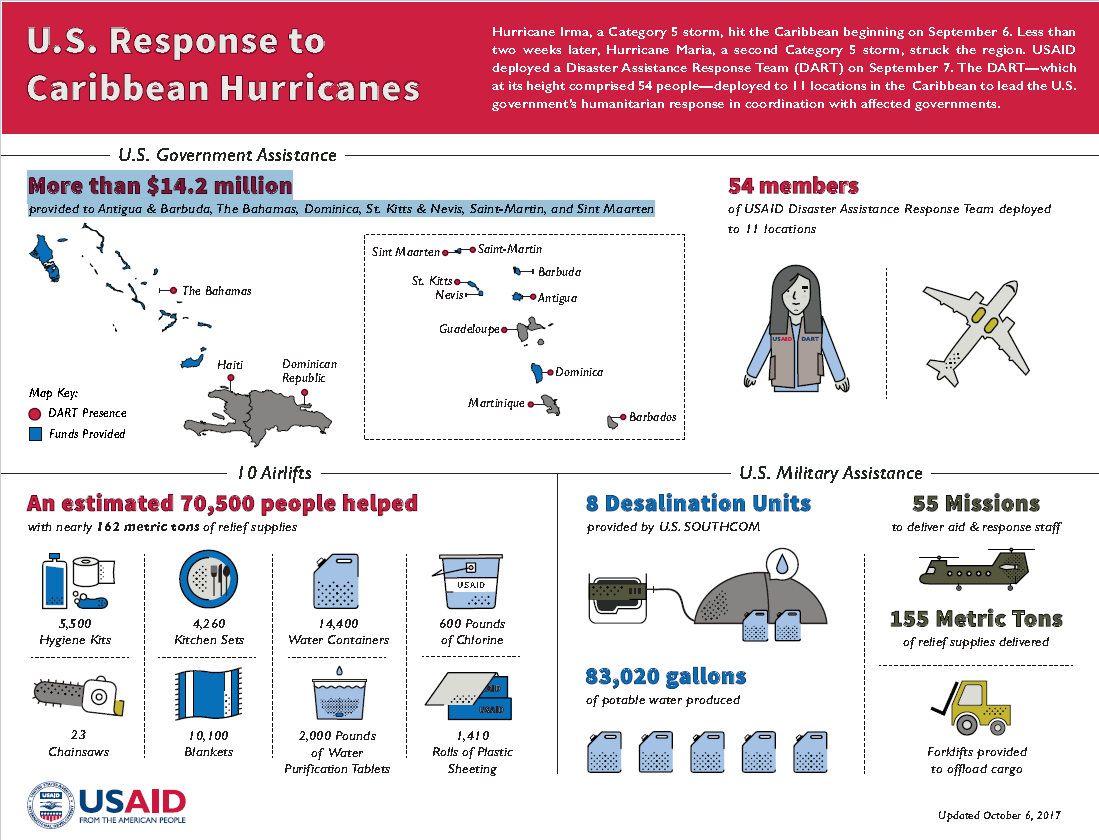The National Hurricane Center (NHC) anticipates that Hurricane Irma will affect The Bahamas through September 9 as the storm continues tracking northwestward across the northern Caribbean. The storm is bringing sustained winds of nearly 160 miles per hour (mph), storm surge of up to 20 feet, and 10–15 inches of rain to The Bahamas, according to NHC forecasts.
The below is attributable to Acting Spokesperson Clayton M. McCleskey:
USAID Administrator Mark Green called Prime Minister Gaston Browne of Antigua and Barbuda this afternoon to convey the condolences and support of the United States to the people of that island nation following the destruction wrought by Hurricane Irma.
Hurricane Irma—the strongest Atlantic hurricane on record—is traversing the Caribbean and has affected several island nations, including Antigua and Barbuda. USAID activates a Washington, D.C.-based RMT and a regional DART with staff in The Bahamas, Barbados, the Dominican Republic, and Haiti. USAID is coordinating relief operations with host governments, USG interagency partners, and other humanitarian actors.
The U.S. Agency for International Development (USAID) has deployed a Disaster Assistance Response Team (DART) as Hurricane Irma - the strongest Atlantic hurricane on record - brings life-threatening rains, winds, and storm surges to the Caribbean. The DART, an elite team of disaster experts, currently has staff in Haiti, the Dominican Republic, Barbados, and the Bahamas, who will coordinate with local authorities and humanitarian organizations on the ground to bring vital assistance to those affected by this hurricane and its aftermath. USAID has pre-positioned critical commodities in high-risk countries, including Haiti, to ensure relief supplies are immediately available to help communities in need.








Comment
Make a general inquiry or suggest an improvement.